Click The Activities:
Ubud Monkey Forest
Ubud Market
Ubud King Palace
Tegal Lalang Rice Fields
Tirta Empul Temple
Celuk Village Silver Smith
Price

UBUD MONKEY FOREST
Mandala Suci Wenara Wana or also known as Monkey Forest Ubud is a nature reserve and temple complex located in the village of Padangtegal Ubud, Bali. In this place there are approximately 749 long-tailed monkeys (Macaca fascicularis) (63 adult males, 34 juvenile males, 219 adult females, 29 young females, 167 juvenile 1 (2-3 years), 118 juvenile 2 (1-2 years). ), 63 Infant old (5-12 months) and 56 infant.
There are six groups of monkeys that occupy different areas in this forest, namely the Pura group, the New Forest group, the Sentral Point group, the eastern group, the Michelin group and the Graves group. This place is a popular tourist attraction in Ubud, and is frequented by more than 120,000 tourists per month.
The forest covers an area of approximately 12.5 hectares and is still being expanded to the south of the area and contains at least 186 species. different trees.[4] Monkey Forest Ubud also has three temples named Pura Dalem Agung Padangtegal, Pura Beji and Pura Prajapati.
These places are located in the village of Padangtegal and are managed by villagers who work directly at Monkey Forest Ubud. Holy Wenara Wena who shrugs The function of this place is to maintain the integrity of the sacred and to promote the Ubud Monkey Forest as a visiting destination for both domestic and foreign tourists.

UBUD MARKET
The Ubud Art Market is a great place to find beautiful silk scarves, lightweight shirts, statues, kites, handmade woven bags, baskets or hats and many other hand-crafted goods. Locally known as Pasar Seni Ubud, the market is opposite the Puri Saren Royal Ubud Palace and opens daily.
Most of the goods found at the Ubud Market are made in the neighbouring villages of Pengosekan, Tegallalang, Payangan and Peliatan. The location of the Ubud Art Market, which is centred among the art producing villages and at the centre of Ubud itself, makes it a strategic shopping place for Balinese handicrafts and souvenirs.
The Ubud market also served as a setting for the Hollywood movie Eat Pray Love, which shows a scene with actress Julia Roberts opposite a male character strolling through the stalls which are frequently visited by foreign and local visitors in real life. Naturally, bargaining is essential.

UBUD KING PALACE
The Ubud Palace, officially Puri Saren Agung, is a historical building complex situated in Ubud, Gianyar Regency of Bali, Indonesia.The palace was the official residence of the royal family of Ubud. It was on his travels that Rsi Markandya received a divine revelation that in Bali he was to bury five precious metals on a mountain slope where the mother temple of Besakih now stands today. Along with a group of followers, Rsi Markandya was magnetically attracted to a destination located in the central foothills of the island that radiated light and energy. This place was Campuhan in Ubud at a junction in the Wos River and it was here that he felt compelled to build a temple by the name of Pura Gunung Lebah.
On subsequent expeditions around Bali, Rsi Markandya built a number of other significant temples and created a shared irrigation system for the terraced landscape that is still practiced by farmers today. The formation of the banjar, which is a village council responsible for community and religious affairs, was also inspired by Rsi Markandya. In essence, it can be said that Rsi Markandya is responsible for the foundation of Balinese Hinduism in its purest form referred to as Agama Tirtha or the religion of holy water.
Since being discovered back in the 8th century, the area of Campuhan has always been highly regarded by the Balinese for its immense spiritual powers. Even the term Ubud is derived from the term ubad, meaning medicine in reference to the traditional healing properties of the array of plants that randomly grow here. Generations of Hindu worshippers have made special pilgrimages to the fork in the Wos River to mediate, bathe and collect holy water for temple ceremonies and cleansing rituals.
There had always been ties between Java and Bali, but it was the disintegration of the once mighty Majapahit Empire in the 15th century that saw a mass exodus of nobles to Bali. A new kingdom on the island’s east coast called Gelgel was consequently established and gave sanctuary to many important ruling families. They brought with them an artistic legacy and the principles of the caste system.
By the 17th century Bali invariably experienced a rapid emergence of new kingdoms, including the founding of several royal houses in Ubud. However, this period also saw much conflict between the royal clans with supremacy as the ultimate goal. A prince from Klungkung was sent to create a palace in Sukawati as a centre of great power and aesthetic beauty. Artisans came from all over Bali to help in its construction and once completed many of them chose to stay. Sukawati today is a community that strongly supports all forms of artistry as well as dance and music.
With the successful establishment of a reigning authority in Sukawati, palace retainers were then sent in the late 1700s to secure the area of Ubud. A pair of cousins formed rival communities in Padang Tegal and further north in the area of Taman. Following subsequent fighting between these neighbouring villages the king of Sukawati sent his brothers Tjokorde Ngurah Tabanan to Peliatan and Tjokorde Tangkeban to Sambahan to establish palaces with the notion to control these troubled areas.
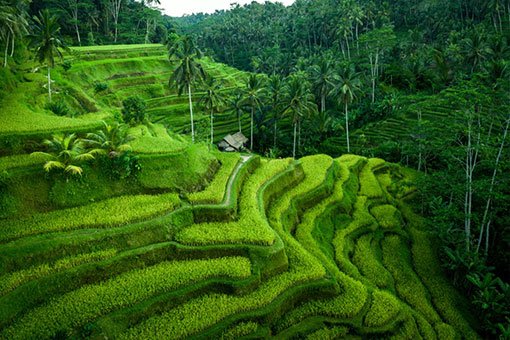
TEGAL LALANG RICE FIELDS
The Tegalalang rice terrace is a long time icon of Bali scenery and culture, with its famous green rice fields and slopes in the jungle.
Sadly that also means the place is getting more and more crowded and it’s turned into a bit of a tourist trap, but it’s easy to see why it was partly listed as a UNESCO World Heritage site.
It’s still one of the most interesting rice paddies Bali has to offer, and if you come here in the right month, it’s one of the brightest shades of green you’ll ever see!
This travel guide will explain how to get to Tegalalang, and everything you need to know before you go!
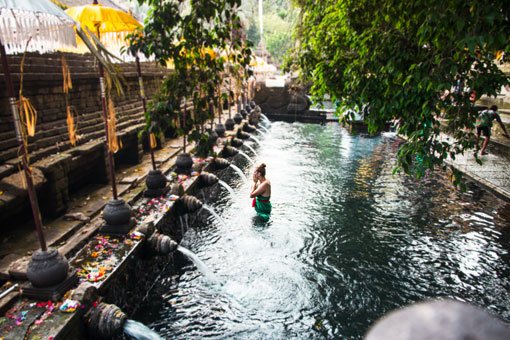
TIRTA EMPUL TEMPLE
Tirta Empul Temple was founded around a large water spring in 962 A.D. during the Warmadewa dynasty (10th-14th centuries). The name of the temple comes from the ground water source named “Tirta Empul”. The spring is the source of the Pakerisan river. The temple is divided into three sections: Jaba Pura (front yard), Jaba Tengah (central yard) and Jeroan (inner yard). Jaba Tengah contains 2 pools with 30 showers which are named accordingly: Pengelukatan, Pebersihan and Sudamala dan Pancuran Cetik (poison).
The temple is dedicated to Vishnu, another Hindu god name for the supreme consciousness Narayana. On a hill overlooking the temple, a modern villa was built for President Sukarno‘s visit in 1954. The villa is currently a rest house for important guests.
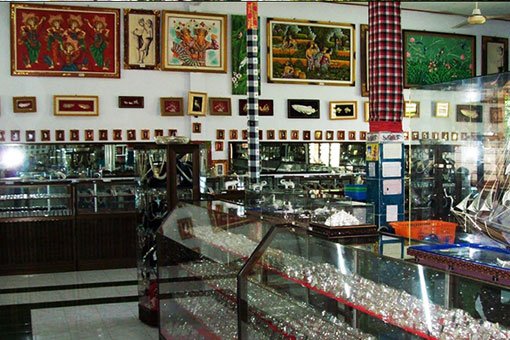
CELUK VILLAGE SILVER SMITH
Bali Celuk Village is a traditional village located near to Ubud in the Gianyer Regency where you can appreciate the mountain culture which in many ways is similar to that of the traditional areas of Ubud and the other surrounding villages except for one major factor, Celuk Village is famous for the incredible gold and silver handicrafts which are available around this area for very low prices.
Celuk Village is the center of Silver art
In the Sukawati area you will find that the craftsmen are of a very high standard and you can barter over these goods or even buy in wholesale capacity. As well as the shopping opportunities there is a lot to see around Celuk Village and the culture of the area is fascinating as well as relaxing to see where the pace of life is slow and you will find some interesting characters as well as plenty of place to try the local dishes and international dinning. There are some other attractions as well as in the area as well as a number of facilities and hotels which are usually top end or midrange boutique little places hidden away in the village.
Location Celuk Village
Approximately, the distance separating Celuk Vilage and Denpasar is 8 km. It’s located right after Batubulan Village which you’re bound to pass on the way to Ubud. The famous Sukowati Traditional Market is also near this village, so it’s always a good idea to stop at Celuk after a whole day shopping in the market. Simply ask local vendors in the market about the direction to Celuk Village; they will be more than happy to guide you there. The neighborhood stands out from the surrounding, thanks to gold and silver works gallery trimming both sides of the road.
History of Celuk Village
In the past, the dwellers of Celuk Village were mostly farmers. Rumors have it that there were only three families who belonged to the caste of Pande that pioneered this industry. This caste is well-known for their specialty in manipulating all kinds of metals to create accessories for Hindu’s prayers. As tourism was becoming main commodity in Bali, more and more villagers left their farm behind and began to learn to craft silver and gold. Specifically, in 1976, almost all of the villagers had become silver smiths and Celuk Village has been popular with its beautiful jewelry and other silver handicrafts since then.
UBUD
Ubud the great pleace to visit,these area are wide and has many tourist attraction to explore. The trip usually about 2 and half hours from Lovina to Ubud and we can visit:
* Ubud Monkey Forest
* Ubud Market
* Ubud King Palace
* Tegal lalang Rice fields
* Tirta empul temple
* Celuk village Silver Smith
PRICE
One day Tour Rp.850.000/Car

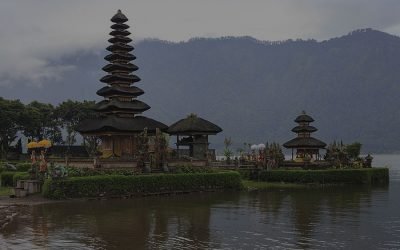
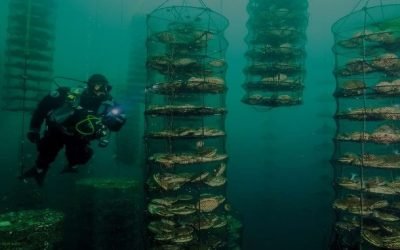
0 Comments